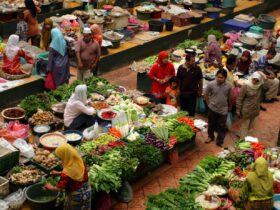Diseases of Potato and Tomato:
| Characteristics | Diseases of Potato &Tomato | ||
| Diseases | Late blight of Potato/Tomato
|
Early blight of Potato/Tomato
|
Black leg (Soft rot) of potato |
| Pathogen | Phytophthora infestans | Alternaria solani | Erwinia caratovora subsp. Caratovora
|
| Economic importance | Late blight of potato and tomato, the disease that was responsible for the Irish potato famine in the mid-nineteenth century, is caused by the fungus-like oomycete pathogen Phytophthora infestans. It can infect and destroy the leaves, stems, tubers, and fruits of potato and tomato plants | Early blight of potato/tomato is economically less importance than late blight potato/tomato
|
It is the most destructive bacterial disease of potato and is widely distributed wherever potato is grown |
| Symptoms | 1.Initially starts from leaf tips or margins and spread inward.
2.Progressive defoliation and collapse of plants under favourable conditions. 3.Water soaked stripes on stem which becomes necrotic 4.Purplish brown spots appear on skin of tubers. On cutting, the affected tubers show rusty brown 5.Dark brown spots appear on skin of tomato fruits. 6.Decay of plant parts under favorable weather which emits foul smell
|
1.Small, isolated, scattered pale brown spots on the leaf.
2. Fully developed spots are irregular, brown to dark brown in color, and with concentric rings inside the spot. 3.Spots coalesce to form large patches resulting in the leaf blight. 4.In severe attacks the entire plant may be defoliated. 5. Lesions/ spots may also develop on stems and petioles, which break at the point of infection.
|
1.Plants are stunted with a stiff, erect growth habit.
2.Foliage becomes chlorotic and the leaflets tend to roll upward at the margins. 3.Stems of infected plants exhibit an inky black decay. 4.The base of the stem is often completely rotted. 5.Plants may wilt 6.Soft rot include rotted tissues that are wet and cream in color. 7.Rot begins on the tuber surface and progresses inward. 8.Infected tissues are sharply delineated from healthy tissue by dark brown or black margins. 9.In the early stages of decay, rotting tissue is usually smell-less, but develops a foul 10.smell as secondary organisms invade infected tissue.
|
| Diseases cycle | Primary infection by infected potato tubers
or seeds or oospores Secondary infection by zoospores dispersed by wind or water
|
Primary infection: Mycelium or conidia in infected plant debris.
Secondary infection: Conidia dispersed by wind, water or rain splashes.
|
Survive in diseased and contaminated tubers
Spread through contaminated soil and tubers |
| Favorable condition | 1.Cool moist conditions
2.RH: >90% and with suitable temperature (12-240C) 3.Night temperature below the dew point for 4 hours or more 4.Night temperature not below 10°C 5. Cloudiness on the next day. 6.Rainfall at least 0.1mm on the following day
|
1.Warm, humid (24-29°C/ 75-84°F) environmental conditions are conducive to infection.
2.In the presence of free moisture and at an optimum of 28- 30°C (82-86°F), conidia will germinate in approximately 40 min.
|
High humidity (94 – 100%) with suitable temperature (21 – 290C).
|
| Management | Use of integrated management practices is necessary for successful suppression of potato or tomato late blight.
Cultural practices: ü Sanitation (elimination or exclusion of infected plant parts from a farm) is important in the overall management strategy. ü Regulatory measures ü Select healthy tubers/seeds for planting ü Delayed harvesting Resistant cultivars: using resistant cultivars if available. Prophylactic measures/Chemical control: • Metalaxyl (0.1%) or Mancozeb (0.25%) can be applied at 10 to 15 days intervals in potato field. • Dip sprouted tubers/seeds in 0.2% metalaxyl for 30 min.
|
Use of integrated management practices is necessary for successful suppression of potato or tomato early blight.
Cultural practices: v Sanitation (elimination or exclusion of infected plant parts from a farm) is important in the overall management strategy. v Select healthy tubers/seeds for planting v Delayed harvesting i.e., after maturing tubers/fruits. Resistant cultivars: using resistant cultivars if available. Prophylactic measures/Chemical control: q Mancozeb or Zineb@ 0.25% spray at weekly intervals. q Dip sprouted tubers/seeds in 0.2% metalaxyl for 30 min
|
Cultural practices:
Ø Remove and destroy infected plant debris. Ø Sow the crop early Ø Treat the seeds with Thiram or Carbendazim at 2 g/kg. Resistant cultivars: using resistant cultivars if available. Prophylactic measures/Chemical control: Dip cut seed pieces of potato in a solution of Streptocycline 100ppm and CuSo4 40ppm for 30 min.
|
Contact:
If you have any questions, thoughts, or suggestions, please contact us or join our social media networks.
Email us: [email protected], [email protected]
Feel free to comment:
Your email address will not be shared with anyone.
Join our LinkedIn group
https://www.linkedin.com/groups/13943442/
Join our Facebook group
https://www.facebook.com/groups/agribusinesseducationandresearchinternational
You May Read: Producers Surplus of Agricultural Commodities – Agribusiness Education and Research International
You May Read: What are the Characteristics and Traits of an Entrepreneur? – Agribusiness Education and Research International
You May Read: Why is market information important? – Agribusiness Education and Research International
You may read: Agribusiness how it works? – Agribusiness Education and Research International
You may read: Covid -19 Pandemic Impact on Agribusiness – Agribusiness Education and Research International
You may read: What is Agribusiness? – Agribusiness Education and Research International
You may read: Agribusiness in Bangladesh – A Basic Introduction – Agribusiness Education and Research International
You may read: Organic Agriculture Introduction – Agribusiness Education and Research International
You may read: What is Sustainable Agriculture? – Agribusiness Education and Research International
What is Permaculture? – Agribusiness Education and Research International
E-Commerce and Supply Chain Finance – Agribusiness Education and Research International
What is Supply Chain Finance? – Agribusiness Education and Research International
What is an agile supply chain in Agribusiness? – Agribusiness Education and Research International
What is Supply Chain Management in Agribusiness? – Agribusiness Education and Research International
Supply chain management and Agribusiness – Agribusiness Education and Research International
Factors Affecting Supply Elasticity – Agribusiness Education and Research International






Leave a Reply